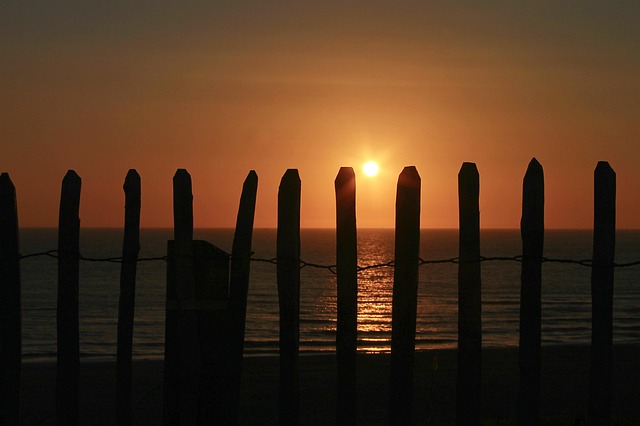In New Bedford, MA, the pursuit of sustainable living has extended to landscaping, with a growing interest in eco-friendly fencing materials. This trend not only contributes to a greener environment but also offers unique aesthetic and functional benefits. This article explores the diverse options available in eco-fencing, delving into their advantages for local ecosystems, community initiatives, and individual property owners. From natural materials to innovative designs, discover how sustainable fencing can transform outdoor spaces while promoting environmental harmony.
- Understanding Eco-Friendly Fencing Options
- Benefits of Green Fencing in New Bedford
- Sustainable Materials for Long-Lasting Fences
- Enhancing Local Ecosystems with Organic Fencing
- Community Impact: Eco-Fencing in Action
- Choosing the Right Green Fence for Your Space
Understanding Eco-Friendly Fencing Options
Eco-friendly fencing options have gained popularity as more homeowners and businesses in New Bedford, MA, become conscious of their environmental impact. These materials offer an alternative to traditional fences, which often rely on harmful production processes and non-renewable resources. Understanding these options is key to making informed decisions that contribute to a greener environment.
Eco-friendly fencing materials are typically made from sustainable sources, such as recycled plastic, bamboo, wood from responsibly managed forests, or plant-based composites. They not only reduce carbon footprints but also provide long-lasting durability and aesthetic appeal. By choosing these options, residents can enjoy the benefits of secure boundaries while aligning with their commitment to ecological preservation.
Benefits of Green Fencing in New Bedford
In New Bedford, MA, opting for green fencing materials offers a multitude of benefits that extend beyond aesthetic appeal. Eco-friendly options like recycled plastic, bamboo, or organic wood not only reduce environmental impact but also contribute to a healthier local ecosystem. These materials are durable and require less maintenance compared to traditional fences, saving residents time and money in the long run. Moreover, green fencing can enhance property values by appealing to environmentally conscious buyers and provide valuable habitat for local wildlife.
Additionally, incorporating sustainable fencing practices contributes to New Bedford’s overall sustainability goals. By choosing eco-friendly materials, residents participate in preserving natural resources and mitigating climate change. With proper care, these fences can last for years, making them a smart investment that balances functionality with environmental responsibility.
Sustainable Materials for Long-Lasting Fences
In the pursuit of eco-friendly solutions, New Bedford residents and local authorities are increasingly turning to sustainable materials for fencing. These materials offer a compelling blend of environmental friendliness and durability, ensuring long-lasting fences that can stand the test of time—both in terms of physical wear and changing weather patterns. Natural options such as wood from sustainably managed forests, recycled plastic, and plant-based composites top the list due to their low carbon footprint and ability to decompose naturally over time.
Moreover, these sustainable materials often prove more cost-effective in the long run, defying the common misconception that eco-friendly products are more expensive. Their resilience against rot, pests, and extreme weather conditions reduces the need for frequent repairs or replacements, thereby saving money and minimizing waste. This is particularly beneficial for New Bedford’s diverse landscapes, from urban gardens to rural properties, where fencing plays a vital role in defining spaces and protecting plants while harmonizing with the natural environment.
Enhancing Local Ecosystems with Organic Fencing
Organic fencing materials offer a sustainable and environmentally friendly alternative to traditional options, playing a crucial role in enhancing local ecosystems. In New Bedford, MA, where biodiversity is a priority, these natural barriers can support a thriving array of plant and animal life. By using organic compounds like wood chips, compost, or straw, fencing can create habitats for beneficial insects, birds, and small animals, contributing to a balanced ecosystem.
Moreover, this approach reduces the ecological footprint compared to synthetic fences. It minimizes pollution from production and disposal, preserves natural resources, and promotes soil health by incorporating organic matter into the ground over time. This not only beautifies landscapes but also fosters a healthier environment for both residents and wildlife in New Bedford.
Community Impact: Eco-Fencing in Action
In New Bedford, MA, eco-friendly fencing materials are making a positive impact on the community and environment. Local initiatives have embraced sustainable options like recycled plastic, bamboo, and plant-based composites, reducing the carbon footprint associated with traditional wood and vinyl fences. These materials not only contribute to a greener landscape but also foster a sense of community pride. Neighbors are inspired to join in these efforts, creating a unified front for environmental stewardship.
The benefits extend beyond aesthetics; eco-fencing promotes biodiversity by providing habitats for local wildlife and helps mitigate water pollution, as many of these materials are designed to be durable and less prone to leaching chemicals. This community-driven shift towards sustainable fencing practices is a powerful example of how individual choices can collectively make a significant difference in preserving the natural beauty and health of our cities.
Choosing the Right Green Fence for Your Space
When considering an eco-friendly fence, it’s essential to assess your space and specific needs. Different materials offer unique benefits, from enhanced aesthetics to improved privacy and security. For instance, bamboo fences are not only visually appealing but also highly sustainable as bamboo grows rapidly. On the other hand, recycled plastic fences provide durability and long-term cost savings with minimal maintenance required. In New Bedford, MA, where diverse landscapes exist, choosing a fence material that aligns with both your environmental values and space requirements is key to creating an attractive, eco-conscious outdoor area.
Consider factors like sunlight exposure, desired privacy level, budget, and local climate when making your selection. Each green fencing option has its own set of advantages, whether it’s the natural beauty of wood from sustainably managed forests or the innovative design of recycled materials. By carefully evaluating these aspects, you can make an informed decision that contributes to both a beautiful New Bedford yard and a healthier environment.
